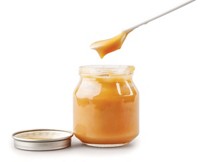Advertisement
Grab your lab coat. Let's get started
Welcome!
Welcome!
Create an account below to get 6 C&EN articles per month, receive newsletters and more - all free.
It seems this is your first time logging in online. Please enter the following information to continue.
As an ACS member you automatically get access to this site. All we need is few more details to create your reading experience.
Not you? Sign in with a different account.
Not you? Sign in with a different account.
ERROR 1
ERROR 1
ERROR 2
ERROR 2
ERROR 2
ERROR 2
ERROR 2
Password and Confirm password must match.
If you have an ACS member number, please enter it here so we can link this account to your membership. (optional)
ERROR 2
ACS values your privacy. By submitting your information, you are gaining access to C&EN and subscribing to our weekly newsletter. We use the information you provide to make your reading experience better, and we will never sell your data to third party members.
Environment
FDA targets arsenic in baby cereal
Agency moves to reduce harmful levels of contaminant in infant rice cereal
by Britt E. Erickson
April 6, 2016
| A version of this story appeared in
Volume 94, Issue 15

The level of inorganic arsenic in infant rice cereal sold in the U.S. would be kept to a maximum of 100 parts per billion under new recommendations by the Food & Drug Administration. Exposure to the toxic element in infants and pregnant women can result in a child’s decreased performance on developmental learning tests, FDA says.
FDA’s proposed limit matches the limit set by the European Commission for rice intended for infants and young children. FDA found that most infant rice cereal in the U.S. meets or is close to meeting its new limit. Out of 76 samples from retail stores in the U.S. in 2014, 47% met the standard, and 78% were at or below 110 ppb, FDA’s data show.
“The proposed limit is a prudent and achievable step to reduce exposure to arsenic among infants,” says Susan Mayne, director of FDA’s Center for Food Safety & Applied Nutrition. FDA is advising parents to give babies iron-rich infant cereals from multiple grains, not just rice, including oats and barley.
Much of the arsenic that accumulates in rice is from naturally occurring sources in soil and water. Manufacturers have been working with rice suppliers, growers, and researchers for many years to lower the amount of arsenic that gets taken up by rice. Baby food manufacturer Gerber claims that its rice cereal is “safe and already meets the guidance level,” because of these combined efforts.
Consumer groups, which have long been urging FDA to set a limit for inorganic arsenic in rice food products, are welcoming the proposed limit for infant rice cereal. But they remain concerned by the lack of arsenic limits for other rice-based foods consumed by children and adults. “This is particularly true of children’s ready-to-eat cereals,” says Urvashi Rangan, executive director of the Consumer Reports Food Safety & Sustainability Center. “We believe the FDA can act swiftly to protect public health and set levels on these products,” she says.





Join the conversation
Contact the reporter
Submit a Letter to the Editor for publication
Engage with us on Twitter